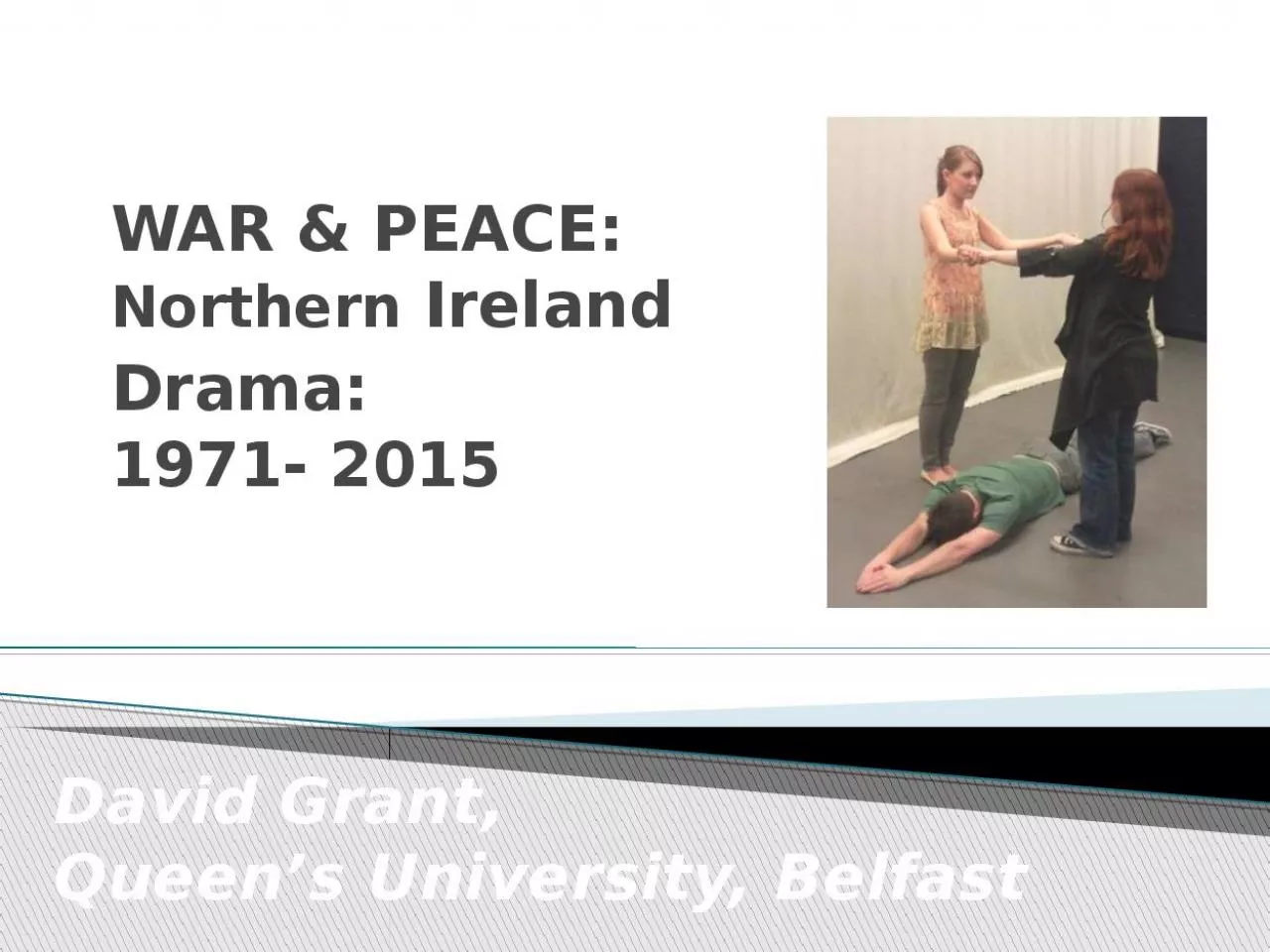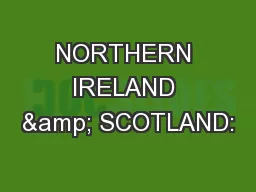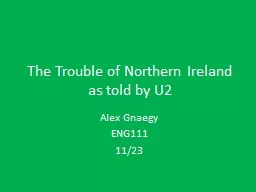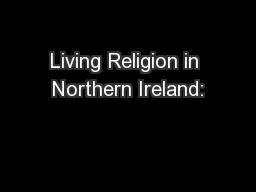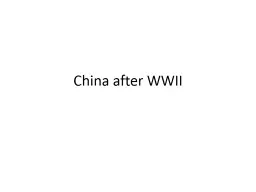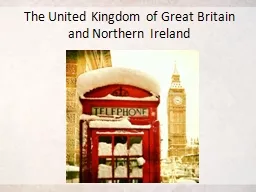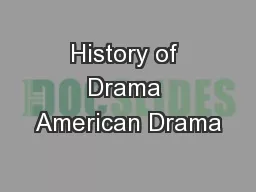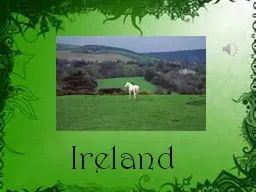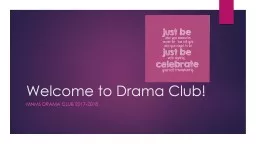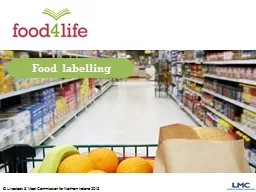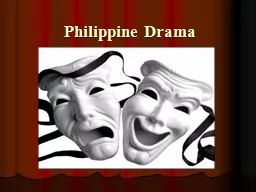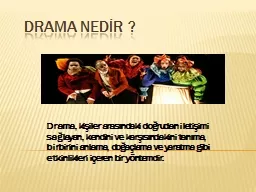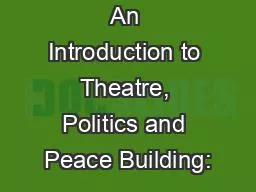PPT-WAR & PEACE: Northern Ireland Drama: 1971- 2015
Author : popsmolecules | Published Date : 2020-09-22
Ireland Drama 1971 2015 David Grant Queens University Belfast 19711994 The Troubles Northern Ireland Somewhere between a wee bit of bother and Civil War
Presentation Embed Code
Download Presentation
Download Presentation The PPT/PDF document "WAR & PEACE: Northern Ireland Drama: ..." is the property of its rightful owner. Permission is granted to download and print the materials on this website for personal, non-commercial use only, and to display it on your personal computer provided you do not modify the materials and that you retain all copyright notices contained in the materials. By downloading content from our website, you accept the terms of this agreement.
WAR & PEACE: Northern Ireland Drama: 1971- 2015: Transcript
Download Rules Of Document
"WAR & PEACE: Northern Ireland Drama: 1971- 2015"The content belongs to its owner. You may download and print it for personal use, without modification, and keep all copyright notices. By downloading, you agree to these terms.
Related Documents

